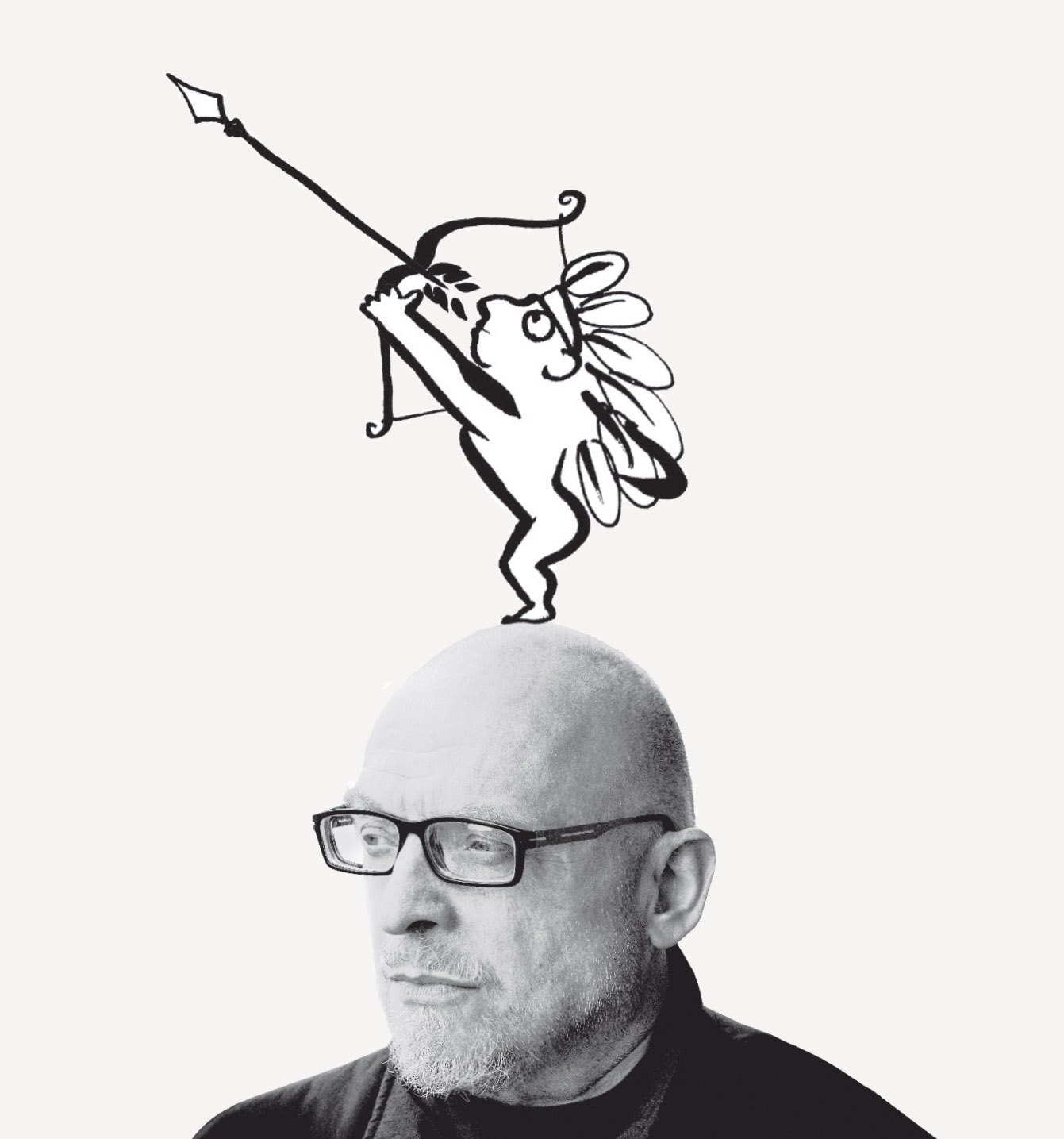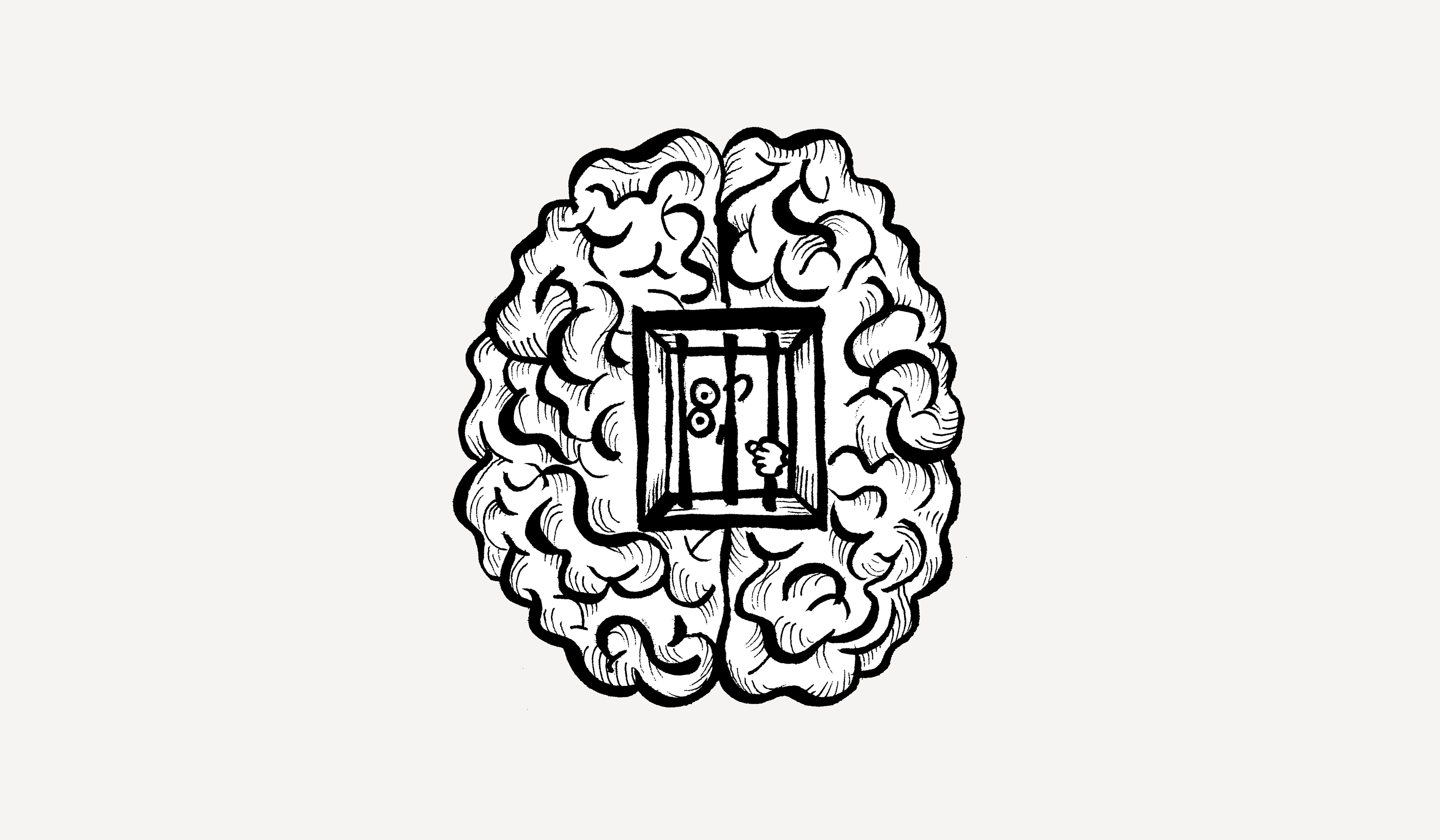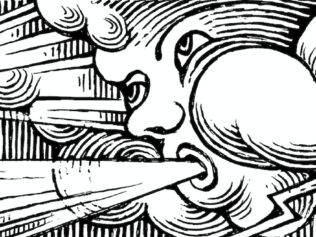
Take a stone in one hand and a small animal, perhaps a mouse, in the other. Squeeze them gently with your fingers and close your eyes. The difference between inanimate and animate matter is obvious, no? And what if I told you that the distant ancestor of that mouse was a living… stone?
Earth, four billion years ago. At the bottom of a shallow pool, gas bubbles rise lazily out of the mud. We look closely at the surface of the mud, which seems to be slightly foamy and slightly fibrous. If we used a microscope, we would observe a tangled web of threads, platelets, pipes and little balls, alternately growing and shrinking, swelling and withering, splitting and joining up. This is the first organism on our planet. Living mud. Unbelievable? Not for two eccentric gentlemen from Scotland who, over the last few decades, have turned the fundamentals of biology upside down.
He breathed into his nostrils
This is an idea as old as the world itself: matter in and of itself is dead, stupid, passive, and without free will. In order for it to be active, to have a will, a goal and a spark in the eye, the element of Spirit is required; the Word whispered into the ear of matter. For as many cultures as there have ever been, there are ways of expressing this primal intuitional concept. The ancient Greeks flirted with the idea of a Great Artist, who cast form into the world, like a craftsman transforming a shapeless lump of clay into a pitcher. The ancient inhabitants of the Indus Valley believed that, just as man is equipped with the carnal ‘I’ and the vital ‘I’, the Cosmos also has a physical body (Virat) and the ‘Soul of the World’ (Hiranyagarbha) that drives it. Without this, the Cosmos would be lifeless and as still as a corpse.
Almost every Middle Eastern culture (and many others) offers its own version of the creation of man from clay. In the Sumerian Epic of Gilgamesh, the goddess Aruru creates a man by the name of Enkidu. The Egyptian god Khnum already had a workshop for making human bodies, created, very professionally on a potter’s wheel. However, the key moment in the creation of man was beautifully illustrated in the classic story about Yahweh who, after moulding the first man, breathed the ‘breath of life’ into his nostrils; only then ‘did man become a living being’.
These notions filtered through into the world of rational philosophy and from there into science. The number of names that scientists used to describe that subtle difference between animate and inanimate matter was no smaller than the number of names of gods to whom the breath of life was credited. So, we have the ‘animal magnetism’ or ‘mesmerism’ of Mesmer, Blumenbach’s ‘formative drive’, Pasteur’s ‘vital phenomena’, the ‘Odic force’ of Von Reichenbach, Driesch’s ‘Entelechy’, Bergson’s ‘vital force’, Reich’s ‘orgone’… and all of these under the general umbrella of vitalism: the conviction that, apart from matter, life still needs that extra ‘something’.
In the 20th century, we at last discovered the chemical construction of organic cells and the ‘game with vitalism’ came to a brutal end. Although we don’t have a complete recipe for life, we do at least know the list of ingredients and, for living things, there is nothing that cannot be described using the regular language of chemistry. The search for ‘the vital force’ has therefore morphed over time into the search for possible scenarios about how life began: what precisely were the first organisms made of and how did it happen that these ingredients came to be together in one place?
It might seem that biology has now been rinsed clean of the last remnants of the old theory of vitalism, and yet almost all of the proposed theories on this topic, in a firm of undisputable axiom, come with a specific coating of vitalism. Invariably, these scenarios involve a nutritious, organic broth, rich with tasty amino acids, sugars and fats. The search for the source of life, therefore, is based on the conviction that something like the ‘chemistry of life’ does exist; matter that is not yet alive, but that is ‘able to be brought to life’; moreover, it is the same chemistry from which we, the birch trees and bacteria, are all made of today.
However, one can try to undermine this reasoning by proposing something which, at first sight, seems madness – the emergence of life from dust and ashes; from clay, the basest, nastiest matter in the Cosmos. Although this possibility has been whispered about for a long time, it took superhuman courage, fantasy and determination to let it bloom to the level of a decent scientific hypothesis.
Crystal genes
Alexander Graham Cairns-Smith arrived on the scientific scene at the end of the 1960s and, with his very first scientific article written when he was in his 30s, revealed his fascination with the riddle of the origins of life and his efforts to solve it in, shall we say, an unconventional manner. Here are some of the titles of his articles: “Arguments for the extra-terrestrial origins of life”, “Formose production by minerals: Possible relevance to the origin of life”, “Beginnings of Organic Evolution”… Finally, in 1987, and without warning, Cairns-Smith’s book, Genetic Takeover, in which he presents his grand theory, was published by the prestigious Cambridge University Press. Living organisms, declared Cairns-Smith, were initially made of minerals and not organic compounds, which only appeared later, parasitically, gradually becoming independent of their crystal companions.
A lunatic? If so, he was convincing. Cairns-Smith began his lecture with an intriguing analogy. Take an intercontinental nuclear missile. In a purely historical sense, as an advanced long-distance type of weapon, it is a distant descendant of the bow and arrow. However, is it built of the same materials? People who imagine the first living cells as smaller, very simple combinations of proteins, carbohydrates or fats, behave like a historian who imagines that the ancient bow and arrow was a cross between a metal biro and a smartphone. Advanced structures demand advanced materials. The first structures were simple; so, let’s look for materials that were simpler than the organic compounds of the cells we know today.
Cairns-Smith’s argument wouldn’t have been half as convincing if it was not for his crazy fascination with minerals which, in his narrative, literally come to life. But honestly, what normally comes to mind when you hear the word ‘mineral’? Probably some kind of stiff, regular-shaped crystals, like grains of sand. Even though many minerals do in fact create this sort of simple, static nugget, this is not a universal rule. Are you familiar with asbestos? This is also a mineral structure, but it looks more like cotton wool than stone. Cairns-Smith’s eye fell upon minerals that look and behave slightly more interestingly than a quartz crystal. The high-quality electron microscope images that decorate his book show us a world of tangled and matted fibres and threads, cracked and corrugated plaques, and even bubbles and tiny balls. The Scotsman studied clay minerals particularly carefully. These are made of enormous numbers of very thin sheets, reminiscent of a deck of cards or a ream of paper.
But that is not all. These bizarre structures are not static, dead sculptures ‘cut from stone’. Clay minerals can, for example, absorb water and swell, and then release the water again. They can even be selective in this process, taking in only certain elements from the solution and ‘refusing’ others. The fibres and mineral sheets separate and split, settling elsewhere, where they form a new ‘mineral colony’, which then grows, taking chemical components from the solution.
These processes, somewhat alarmingly, resemble reactions to environment, feeding and reproduction in turn. On the basis of this, Cairns-Smith suggested a scenario in which the first system of life was a ‘dynamic mud’ that carried out a range of simple chemical reactions to ensure its energy supply and reproduction through a cycle of swelling, splitting and shrinking. What’s more, part of this scenario is the creation of the first version of genetic code; what DNA does today, but constructed entirely on a mineral base.
How can this be possible? Let’s go back to the clay minerals. If one looks more closely at them, it turns out that between the individual sheets you can find thin layers of additional particles or ions. These minerals therefore are not a simple, ‘dry’ stack of layers resembling a ream of paper, but rather a cake in which aluminosilicate ‘wafers’ are interspersed with various tasty additions. Successive layers can have a different composition, like a delicious Pischinger wafer: wafer-jam-wafer-chocolate-wafer-jam-wafer-fruit puree… We assign the layer of jam the letter ‘D’, the chocolate the letter ‘C’, the fruit puree the letter ‘P’, and the wafer itself the letter ‘w’. The sequence of our cake would then look as follows: wCwCwDwPwPwCwDw and if, for the sake of clarity, we leave out the wafer we get CCDPPCD.
Let’s take this further. Clay minerals grow freely in the right conditions, both ‘upwards’ (where new layers are formed) and ‘sideways’ (where the number of layers is fixed, but the diameter of the whole ‘cake’ increases). In this second case, thanks to the miracle of chemistry, the ‘jam’ layer will only be added to by more atoms of ‘jam’, the ‘chocolate’ only by atoms of ‘chocolate’, and the ‘wafer’ layers only by additional ‘wafer’ ingredients. The sequence of the cake is thus reproduced: a seven-layer cake of ‘genotype’ CCDPPCD, initially with the diameter of one Polish grosz coin (roughly the size of a halfpence piece), could therefore grow to the size of a plate, still comprised of exactly the same sequence of layers (although in Cairns-Smith’s scenario, we are talking rather of nano- and micro-metres). However, these thin mineral flakes become more and more susceptible to cracks as they grow, for example, under the influence of water movement or collisions with other mineral particles. So, a chipped fragment of mineral clay can split off from its ‘mother’ and settle a little further away, while still retaining its ‘genetic’ sequence and going on to grow according to the same schema. This is therefore not just reproduction, but reproduction with the transfer of genetic information!
Where in this picture is the chemistry of life as we know it? Cairns-Smith suggested that, at the edges of the mineral ‘cakes’, simple organic compounds could have acted like a type of glue at first, improving the stability of the structures. Only later would they start to perform other functions, gradually accumulating increasing independence. What a vision, huh? Genetic Takeover might have remained what it was – an isolated curiosity, the wild fantasy of an eccentric chemist – but for his young colleague at the University of Glasgow, Lee Cronin.
In the heat of torture
11th July 2011, Edinburgh. The opening of the TEDGlobal 2011 conference, one of the most important events on the world stage for ideas. Speakers invited to TED are the cream of world thinkers, and their lectures are widely discussed afterwards. The opening lecture is to be given by a 38-year-old chemist from near Glasgow, Lee Cronin. Cronin was already something of a superstar in the world of chemistry (obviously in so far as that discipline is able to create a superstar). He is known for the fact that he attacks only the thorniest problems in his laboratory. Take the home synthesis of medicines: one of Cronin’s favourite projects is to develop a standard set of connected cylinders, flasks, heaters, separators and centrifuges, controlled automatically from a personal computer, which anyone can assemble in their garage and, after downloading the appropriate recipe from the internet, can then use to make any chosen organic compound. One of the first products made this way was sildenafil, better known as Viagra. Cronin’s dream is to make it easy for anyone to bypass the pharmaceutical companies to obtain medicines for the cost of a few thousand dollars. Madness? Hah! Listen to what Cronin shocked his audience with at his inaugural speech at TEDGlobal 2011.
The title of his lecture, “Making matter come alive”, stimulates and fires up the imagination, although most of the audience probably thought it would be on the same subject that chemists have been discussing for decades: the scenario for creating protocells from simple organic compounds. Not this time. The stunned audience was presented instead with ‘an alternative route to life’; completely inorganic, based on metal and mineral compounds. In Cronin’s laboratories, it turned out, they had been conducting an experiment that had previously only been imagined by sci-fi visionaries, such as Stanisław Lem, in his short story about Doctor Diagoras. And so, a rich mixture of inorganic compounds, which form various types of complex structures similar to Cairns-Smith’s mineral menagerie, was subjected to serial torture; alternate cooling and heating, increased and decreased acidity, different concentrations of solvent… Over and over again, looking for the most stable structures that not only survive, but that, maybe, also start to reproduce.
I would love to write that, during Cronin’s crazy experiments, mineral monsters actually began to crawl out of his test tubes, developing independence and evolving. Unfortunately, despite many years of strenuous attempts, he hasn’t yet managed to create inorganic life. Of course, in science it is rare that such intense efforts bring zero benefits and the Glasgow team has, for example, discovered numerous structures with a range of applications in nanotechnology. But inorganic life wasn’t and still isn’t there. Relax. Cronin is still a young man. Maybe the 2020s will bring the solution to the riddle of life? Or maybe we just need another crazy Scotsman with a surname starting with the letter ‘C’?
Translated from the Polish by Annie Jaroszewicz

